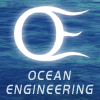
|
Vern Miller Senior Principal Engineer vmiller@apl.washington.edu |
Research Interests
Mechanical and Electromechanical Systems for Ocean Research
Biosketch
Vern Miller is an expert in stress analysis, finite element analysis, vibration analysis, system modeling and simulation, and ocean engineering. He is also skilled in hydraulic system design, high-pressure sealing techniques, heat transfer, and fluid mechanics. He has worked extensively in the development and deployment of large oceanographic systems in the deep ocean.
He has designed equipment for the successful recovery of 3-ton sulfide rocks from 2200-m deep water in the Pacific Ocean and built 50-foot tall acoustic towers for deployment in the Atlantic Ocean. He has built and deployed equipment beneath the arctic ice and designed electrical generators for tapping into mid-ocean hydrothermal vents. His expertise has been in the successful integration of high-technology research equipment into the harsh ocean environment. Mr. Miller joined APL-UW in 1980.
Department Affiliation
 |
Ocean Engineering |
Education
B.S. Mechanical Engineering, University of Washington, 1980
|
Publications |
2000-present and while at APL-UW |
Autonomous and ship-cabled, bottom mounted sonar systems%u2014Development, uses and issues associated with transitioning to ocean observatories Williams, K.L., R.D. Light, and V.W. Miller, "Autonomous and ship-cabled, bottom mounted sonar systems%u2014Development, uses and issues associated with transitioning to ocean observatories," J. Acoust. Soc. Am., 117, 2471, 2005. |
More Info |
1 Apr 2005 |
|||||||
|
Three bottom mounted sonar systems will be described that were built over a span of fifteen years. The complexity of deployment and sophistication of the tasks performed increased with each system. The first system is an autonomous tower with rotating sonar designed to examine backscattering from an area within 50 m radius of the tower. The second is a ship-cabled system that includes a diver movable tower and separate buried array for examining both backscattering and acoustic penetration into sediments. The last is a ship-cabled rail/tower system designed to carry out forward scattering and synthetic aperture backscattering measurements. All three systems are designed to remain deployed for time periods up to a couple of months. After describing the systems, their deployment and some example results, recent efforts will be described that are aimed at transitioning these types of systems to cabled ocean observatories. The overall goal of the talk is to indicate both the level of complexity that can be envisioned for bottom mounted systems as well as the new issues that must be addressed in moving to cabled ocean observatories. |
|||||||||




